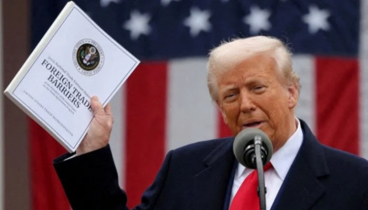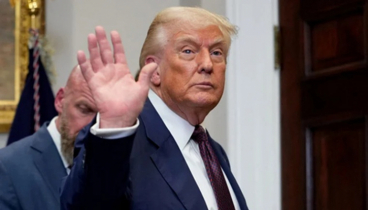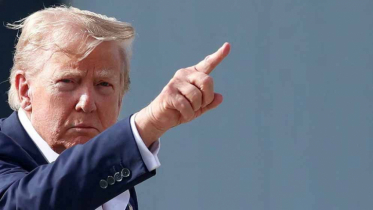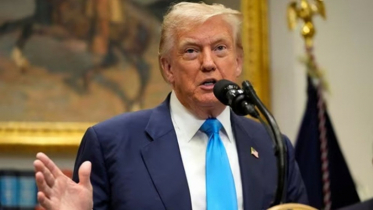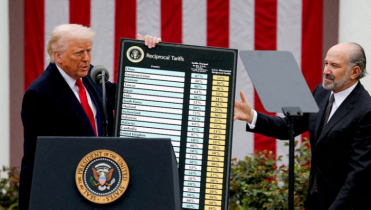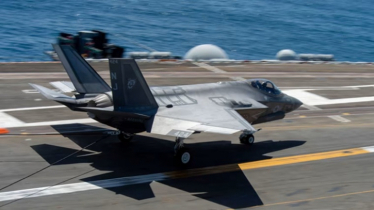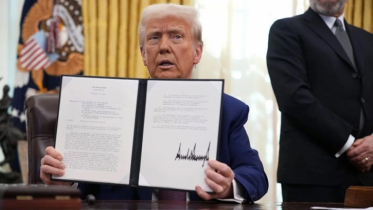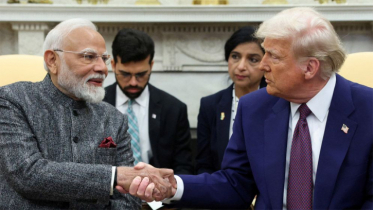Trump Imposes Steep New Tariffs on Dozens of Countries

Published : 19:31, 1 August 2025
President Donald Trump has introduced a sweeping set of new tariffs on imports from dozens of U.S. trading partners, including Canada, Brazil, India, and Taiwan — a move that sent global stock markets tumbling on Friday.
The new tariffs include:
- 35% on many Canadian goods
- 50% on Brazilian imports (with some sector exemptions)
- 25% on Indian goods
- 20% on Taiwan
- 39% on Switzerland
In total, Trump's executive order imposes new import duties ranging from 10% to 41% on 69 trading partners, set to take effect in seven days. Analysts estimate this will raise the U.S. average effective tariff rate from 2.3% last year to about 18%.
Market Reaction
Stock markets reacted sharply. Europe’s STOXX 600 index dropped 1.3% to its lowest level in a month. U.S. stock index futures fell 1%, and Canadian stock futures also slipped.
Wei Yao, chief economist at Société Générale in Asia, noted that while the market reaction was serious, it wasn’t as chaotic as the global downturn triggered by Trump’s initial tariffs in April.
“We’re more accustomed to 15-20% tariffs now. The threats earlier this year were worse,” she said.
Rising Prices
The tariffs are already pushing prices higher. The U.S. Commerce Department reported Thursday that prices for home furnishings and durable goods rose 1.3% in June — the sharpest increase since March 2022.
Global Response
Countries hit by the tariffs are calling for negotiations.
- Switzerland said it was shocked and would seek a diplomatic solution.
- Taiwan’s President Lai Ching-te called the 20% tariff “temporary” and said talks are underway to reduce it.
- South Africa, facing a 30% tariff, is looking for “practical measures” to protect its economy.
Some Southeast Asian nations were relieved that their tariffs were lower than anticipated, averaging around 19%. Thailand, for example, had originally faced a 36% duty, which was reduced to 19%.
“This maintains Thailand’s global competitiveness,” said Thai Finance Minister Pichai Chunhavajira.
Australia fared relatively well, retaining a 10% tariff rate — the lowest in the group. Australian Trade Minister Don Farrell said this would help boost Australian exports to the U.S.
However, many economists warned that the overall effect of these measures would be harmful.
“There are no real winners in a trade war,” said Thomas Rupf, CIO Asia at VP Bank in Singapore.
German winemaker Johannes Selbach added, “These tariffs hurt both sides — thousands of families in Europe and the U.S. depend on this trade.”
Country-by-Country Breakdown
Goods from all countries not listed in Trump’s executive orders will still face a 10% import tax — which Trump has hinted could increase. The White House also suggested more trade deals are being developed.
Canada, India, and China
Trump has used emergency powers and economic pressure to push foreign governments into renegotiating trade terms. In a separate order targeting Canada, Trump raised fentanyl-related tariffs to 35%, citing Canada’s failure to curb illegal drug flows into the U.S.
In contrast, Mexico received a 90-day reprieve from 30% tariffs to allow time for broader trade talks.
Canadian Prime Minister Mark Carney expressed disappointment and pledged to protect Canadian jobs and diversify exports.
India is now in talks with the U.S. after being hit with a 25% tariff, which could affect $40 billion in exports, according to an Indian official.
China faces an August 12 deadline to finalize a tariff agreement with Washington. A U.S. official said progress is being made.
The European Union has already agreed to a blanket 15% tariff with the U.S., finalized at the end of July.

.png)
.png)
